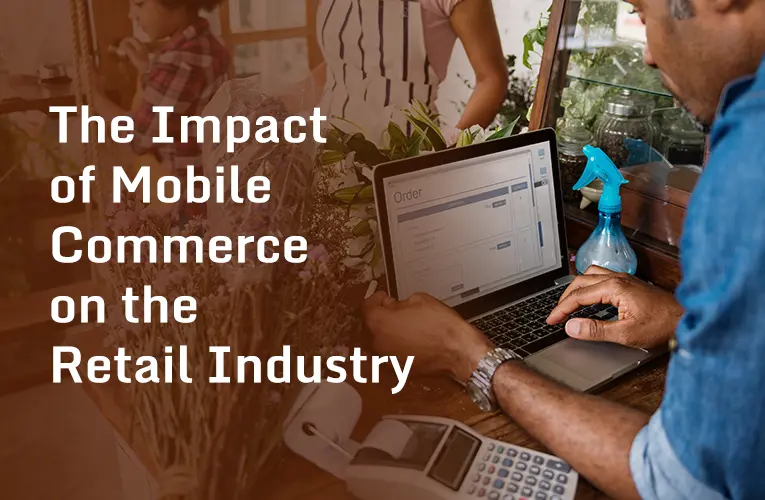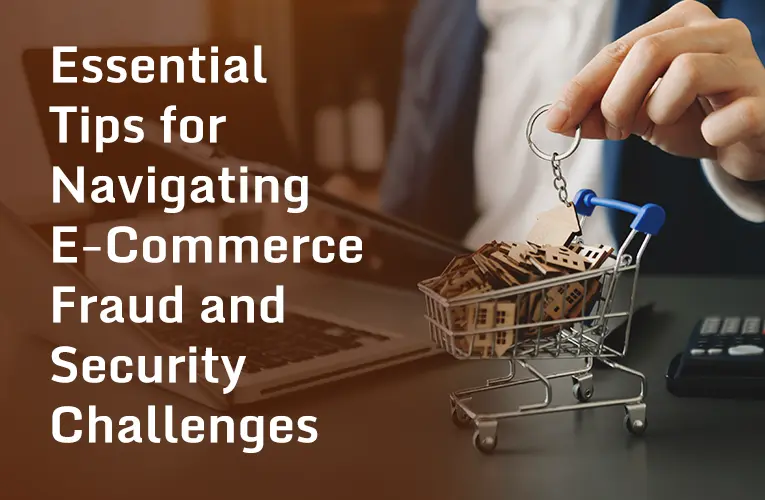The Impact of Mobile Commerce on the Retail Industry
Understanding Mobile Commerce
What is Mobile Commerce?
Mobile commerce refers to the buying and selling of goods and services via mobile devices, such as smartphones and tablets. This encompasses a range of activities, including:
- Mobile Shopping: Purchasing products directly through mobile-optimized websites or apps.
- Mobile Payments: Transactions made using mobile payment systems, such as digital wallets and payment apps.
- Mobile Advertising: Marketing efforts targeting users on their mobile devices through ads, promotions, and notifications.
- Mobile Banking: Financial transactions and account management conducted through mobile banking apps.
The Rise of Mobile Commerce
The rise of mobile commerce can be attributed to several factors:
- Increased Smartphone Penetration: The widespread adoption of smartphones has made it easier for consumers to shop and engage with brands on the go.
- Improved Mobile Technology: Advances in mobile technology, including faster internet speeds and better app functionalities, have enhanced the mobile shopping experience.
- Changing Consumer Behavior: Consumers increasingly prefer the convenience of shopping from their mobile devices, driven by factors such as accessibility and time constraints.
The Impact of Mobile Commerce on the Retail Industry
1. Enhanced Customer Experience
Convenience and Accessibility
Mobile commerce offers unparalleled convenience, allowing customers to shop anytime and anywhere. This accessibility enhances the overall shopping experience by:
- Enabling On-the-Go Shopping: Consumers can browse and make purchases while commuting, waiting in line, or relaxing at home.
- Facilitating Quick Purchases: Mobile apps and responsive websites streamline the checkout process, reducing friction and increasing the likelihood of impulse purchases.
Personalization
Mobile commerce allows for a highly personalized shopping experience through:
- Targeted Marketing: Retailers can leverage data analytics to deliver personalized promotions and recommendations based on user behavior and preferences.
- Geolocation Services: Mobile apps can use geolocation to offer location-based discounts and promotions, enhancing the relevance of marketing efforts.
2. Growth of Mobile Payments
Digital Wallets and Payment Apps
Mobile payments have become a significant component of mobile commerce, driven by the popularity of digital wallets and payment apps such as:
- Apple Pay: A mobile payment and digital wallet service that allows users to make payments using their iPhones and Apple Watches.
- Google Pay: A payment system that enables users to make purchases and send money using their Android devices.
- Samsung Pay: A mobile payment solution for Samsung devices that supports both NFC and MST technology.
Increased Transaction Speed and Security
Mobile payments offer faster transaction times and enhanced security features, such as:
- Contactless Payments: Speed up the payment process by allowing users to tap their devices on payment terminals.
- Tokenization and Encryption: Protect sensitive payment information by using secure technologies to prevent fraud and unauthorized access.
3. Changes in Retail Strategy
Omnichannel Retailing
Mobile commerce has accelerated the shift towards omnichannel retailing, where retailers integrate online and offline channels to create a seamless shopping experience. Key strategies include:
- Unified Customer Experience: Ensuring consistency across mobile apps, websites, and physical stores.
- Click-and-Collect: Allowing customers to purchase online and pick up their orders in-store, combining the convenience of online shopping with the immediacy of physical retail.
Mobile-First Design
Retailers are increasingly adopting mobile-first design principles to cater to the growing number of mobile shoppers:
- Responsive Web Design: Creating websites that automatically adjust to different screen sizes and devices for an optimal browsing experience.
- Mobile-Optimized Apps: Developing apps with user-friendly interfaces and features tailored to mobile users.
4. Impact on Consumer Behavior
Increased Shopping Frequency
Mobile commerce encourages more frequent shopping due to its convenience and accessibility. Consumers can:
- Make Impulse Purchases: The ease of mobile transactions leads to more spontaneous buying behavior.
- Shop More Often: Frequent check-ins on mobile apps can lead to increased engagement and higher purchase frequency.
Influence of Social Media
Mobile commerce is closely linked with social media platforms, where:
- Social Shopping: Consumers discover products and make purchases directly through social media channels, such as Instagram and Facebook.
- Influencer Marketing: Brands collaborate with influencers to drive sales and engagement through mobile-friendly content and promotions.
5. Challenges and Considerations
Security and Privacy Concerns
As mobile commerce grows, so do concerns about security and privacy. Retailers must address issues such as:
- Data Protection: Safeguarding customer information from breaches and unauthorized access.
- Fraud Prevention: Implementing measures to detect and prevent fraudulent transactions and activities.
Technical and Usability Issues
Ensuring a smooth and enjoyable mobile shopping experience requires addressing:
- App Performance: Ensuring that mobile apps run efficiently without crashes or slow load times.
- User Interface: Designing intuitive and user-friendly interfaces that enhance the shopping experience.
6. Future Trends in Mobile Commerce
Artificial Intelligence and Chatbots
AI and chatbots are revolutionizing mobile commerce by:
- Personalized Recommendations: AI algorithms analyze user data to provide tailored product suggestions.
- Customer Support: Chatbots offer real-time assistance, answering queries and resolving issues promptly.
Augmented Reality (AR)
AR technology enhances the mobile shopping experience by:
- Virtual Try-Ons: Allowing customers to visualize how products, such as clothing or furniture, will look in their environment before making a purchase.
- Interactive Experiences: Creating immersive and engaging shopping experiences through AR features and applications.
Voice Commerce
Voice commerce is gaining traction as voice-activated devices become more prevalent:
- Voice Search and Shopping: Consumers use voice commands to search for products and make purchases through voice-activated assistants like Amazon Alexa and Google Assistant.
- Hands-Free Convenience: Voice commerce offers a convenient way to shop while multitasking or performing other activities.
Integrating Mobile Commerce into Retail Strategy
1. Optimize for Mobile
Ensure that your retail website and app are optimized for mobile devices:
- Responsive Design: Implement responsive design principles to provide a seamless experience across different screen sizes.
- Mobile-Friendly Navigation: Design intuitive navigation and search functionalities that enhance the user experience.
2. Leverage Mobile Analytics
Utilize mobile analytics to gain insights into user behavior and preferences:
- Track Metrics: Monitor key metrics such as app usage, conversion rates, and customer engagement to inform your mobile commerce strategy.
- Analyze Data: Use data analytics to identify trends and opportunities for optimization and personalization.
3. Enhance Mobile Security
Prioritize mobile security to build trust and protect customer data:
- Implement Security Measures: Use encryption, tokenization, and secure payment gateways to safeguard transactions and sensitive information.
- Educate Customers: Provide information on best practices for mobile security and encourage customers to use secure payment methods.
4. Embrace Emerging Technologies
Stay ahead of the competition by adopting emerging technologies that enhance mobile commerce:
- AI and Machine Learning: Explore AI-driven tools for personalized recommendations and customer support.
- AR and VR: Invest in AR and VR technologies to offer innovative and interactive shopping experiences.
Conclusion
Mobile commerce has significantly impacted the retail industry by transforming how consumers shop, how retailers engage with customers, and how businesses approach their sales strategies. With its emphasis on convenience, personalization, and innovation, m-commerce presents both opportunities and challenges for retailers. By understanding the dynamics of mobile commerce, integrating it effectively into your retail strategy, and staying informed about emerging trends, you can harness the potential of mobile commerce to drive growth, enhance customer experiences, and stay competitive in the ever-evolving retail landscape. Embrace the future of retail with a robust mobile commerce strategy and position your business for success in the digital age.









